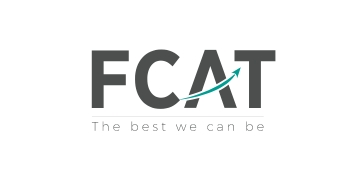Governance experts have warned against a “fundamental conflict of interest” of school leaders also being trustees after all the non-staff members of an academy board resigned over the issue.
Trustees at Denmark Road High School, a grammar school in Gloucester, quit in protest before Christmas after the headteacher refused to step down from the board.
Sources close to the school have accused the Department for Education of “sitting on the fence” about school leaders being trustees, meaning it is “not easy” for boards to remove dominant chief executives.
Now Emma Knights (pictured), chief executive at the National Governance Association, has called for guidance to say “don’t have your chief executive or principal as a trustee”.
She said: “It would be much clearer. It would also seem less personal,” adding that the set-up is an “in-built conflict of interest”.
Five trustees, including the chair, at Denmark Road High School resigned in November and December after seeking to move the single academy trust to new model articles of association, according to sources close to the school. The only trustees that remained were the headteacher and two staff trustees.
The move to the latest model articles of association was a condition laid down in a financial notice to improve prompted by a £62,000 deficit sent in October 2019.
According to a source close to the school, “members were considering not re-appointing the headteacher” to the board on the advice of trustees.
But the situation “became deeply unpleasant because the head wanted to stay on as a trustee, and the trustees thought it best for her to step away, to allow for independent challenge”, the source claimed.
Head argued she should remain on board
A letter seen by Schools Week from the head, Claire Giblin, to the board shows her arguing to remain because “the headteacher as a trustee is legal” and “the headteacher as a trustee strengthens the trustee board”.
Excluding her would reduce her role to “occasional invitee to board meetings”, the letter stated.
The latest Academies Financial Handbook and Governance Handbook states that members can decide whether to make the school leader a trustee, but advises against having “other employees” on the board.
But many academy trusts still use old model articles of association – which automatically list the school leader as a governor.
In 2014, the model articles changed to say that heads may be a trustee “if their appointment is ratified by members”.
The school source said “the DfE are basically sitting on the fence about this” and called for “clear direction that this is not good practice”.
However, Andy Collyer, the school’s new chair appointed last week, said having the headteacher as a trustee follows the rules.
“The board has recently been reformed, in accordance with the current articles of the trust, following the resignation of some of the trustees,” he added.
“Our present board of trustees recognises the importance of, and abides by, the Nolan principles; they are stewards of our school, for which we are grateful.”

Leora Cruddas, chief executive of the Confederation of School Trusts, said chief executives also being trustees had some positives, but she added: “CEOs holding themselves to account is a fundamental conflict of interest… we would like to see a clear separation between executive and non-executive roles”.
However, she said the decision should be left with trusts – rather than ordered by the government.
There are also broader concerns over academy “oligarchs” who hold multiple governance roles.
A government-commissioned report published in October found academy governance was at risk of being “too insular” and a lack of separation in roles was “common practice”. For instance, the report found more than half of academy trust chairs also held positions as members of trusts.
But the government’s most recent governance handbook failed to outlaw the practice.








The other possible issue here is that Boards lack the competence and coherence to a)understand what the real issues are and b) how to challenge the CEO’s role in addressing these. Irrespective of whether a CEO is a board member or not, if Trustees expect to issue diktats to affect the direction taken by the executive or are too supine to stand up and address underperformance in any area, the answer isn’t whether a CEO is a trustee or not. Effective boards work because the flows of information are clear and transparent – around decision making, school improvement etc. The composition of the board membership and the shared cultural alignment with what the organisation is trying to achieve is what is key – CEO in or out is window dressing frankly. Of course, where you do have a stinker of a CEO – and there are some of those – then clearly mass resignations and engaging the EFSA or RSC is the way forward.
Sensible comments.
The only point I’d make is if there is “a stinker of a CEO” then the Trustees should remove the CEO rather than abdicate responsibility and resign. If they don’t do so the Members should then act – they can direct the Trustees to remove the CEO, appoint new Trustees if the current Board aren’t up to the job, and/or update the Articles of Association if need be.
As far as I’m aware there is no academy trust out there where the CEO has any actual control of the Board or indeed their own position.
This is not a ‘Trustee issue”, it’s a ‘Member issue’.
The Trustees of an academy trust are not responsible for, and have no power in, the adoption of new Articles of Association.
According to GIAS there are three Members – Andrew Haigh and Andy Collyer (since 15 July 2020) and David Goddard (since 5 February 2020).
If those three Members want to update the Articles of Association for the Trust they can do so, with or without the consent or approval of any individual Trustee (such as the Headteacher) or indeed the Board of Trustees as a whole.
So saying that “the headteacher refused to step down from the board” is not helpful. The headteacher can make their case why they should continue as a Trustee, and one would expect them to do so, but they have no power whatsoever to force their continuing presence on the Board of Trustees. If the Members don’t want the Head as a Trustee they can ensure that’s the case.
DfE’s latest model Articles are clearer and easier to understand, but there is no real difference in principle. The constitution of an academy trust, and who can be appointed (or removed) as a Trustee, is a matter for the Members.